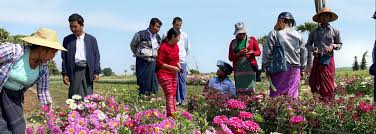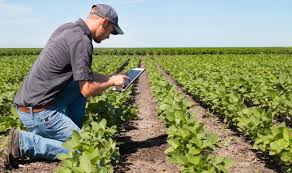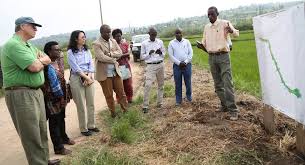In the last article, the scope of agricultural extension was discussed, along with the objectives of agricultural extension, and it concluded with discussions on factors limiting the effectiveness of agricultural extension.
In this article, growth will be highlighted, the support system in agricultural extension will be discussed, and the role of government in extension work will be explained.
Importance of Agricultural Extension in Agricultural Development

A basic role of agricultural extension is to help improve the performance of those involved in primary food production. This is because it disseminates information that enhances their current practices.
This involves a shift from traditional resource-based methods of production to new science-based methods. Specifically, agricultural extension performs these important roles:
1. The Role of Educational Development: This is done by educating the clientele on how to maximize the utilization of their resources and available services. It is achieved through the development of farmers’ skills and attitudes so they can benefit from improved technology.
2. Extension as a Vacuum Filler: Many farmers are unaware of sources of input, credit facilities, or markets for their products. These are limiting factors in farmers’ cultivation practices and income. The role of extension in helping farmers access information on these resources has greatly improved their production and standard of living.
3. Link Between Farmers and Researchers: Agricultural development depends on new technologies. If these technologies do not reach the end users, they are useless. Extension links farmers to researchers, helping them conduct research that is culturally compatible, technologically acceptable, and economically feasible (Okunlola et al., 2005).
4. Creating Awareness of Sustainability: Extension services raise awareness of sustainability and environmental management, which helps integrate sustainability elements into agriculture and material resources management. This helps increase economic, social, and ecological resilience (Kroma M., 2005).
5. Supporting Farmers in Decision-Making: One of the primary challenges for farmers is decision-making. Extension services equip farmers with marketing and investment information, training them to make decisions about agricultural prices, management practices, and social issues.
Read Also: Best Number of Ruminant Animals per Housing Unit for Fattening
Support System in Extension

The roles of agricultural extension can be effectively carried out only if the following support activities are provided:
1. Extension Team: Extension work requires teamwork due to the magnitude of the tasks. An extension support team includes:
i. Administrators: They provide the necessary logistics and materials for a conducive working environment.
ii. Researchers: They develop solutions to farmers’ problems through their findings.
iii. Subject Matter Specialists: They interpret research findings for extension agents and farmers, diagnose problems, and provide solutions.
iv. Extension Agents: They communicate research findings or innovations to farmers and provide feedback to researchers.
2. Production of Materials and Teaching Aids: Since extension audiences are diverse, different teaching materials and aids are used to ensure that learners understand and accept the introduced technologies.
3. Essential Inputs and Credit Facilities: Farmers must have access to the necessary inputs to implement new technologies, and credit facilities are essential for purchasing these inputs.
4. Training Facilities and Programs: Extension requires continuous training for both extension agents and farmers. A good training program, supported by the necessary facilities, is crucial for keeping everyone updated on developments.
The Role of Government in Extension Work

Extension activities vary in different countries. In advanced countries, where agricultural production is often on a large scale, farmers hire advisors or farm management specialists to help plan efficient farm organization.
In addition, governments create agricultural extension services that provide technical and economic support to farmers. In some cases, commercial firms supplying agricultural inputs also engage in demonstration trials to show the effectiveness and advantages of their products, followed by teaching farmers how to adapt the practices (Ogunfowora, 1981).
In many developing countries, agricultural extension services are primarily the responsibility of the government. The public extension system dominates information dissemination because most farmers are small-scale producers with limited demand for farm inputs. Government programs play a crucial role in enhancing or hindering the efficiency of extension services.
In Nigeria, for example, there has been growing involvement from Non-Governmental Organizations (NGOs) and international agencies. Despite this, the government remains the primary provider of extension services, and it is responsible for ensuring that there are well-trained and motivated extension workers.
The number of extension workers, as well as government support, influences the extension–farmer ratio. A high ratio reduces the effectiveness of extension services and limits farmers’ productivity.
1. Creating a Conducive Environment for Extension Work: The government should provide extension workers with the necessary tools, such as teaching aids, transportation, incentives, and adequate compensation, to ensure good performance. Timely payment of salaries and allowances will further motivate extension workers.
2. Ongoing Training for Extension Workers: Constant training is essential in extension work. Government support for the training of extension workers is crucial, as their knowledge of new technologies will determine the effectiveness of the services they deliver. Extension workers must be well-versed in the technical and economic aspects of new technologies.
3. Support for the Adoption of New Technologies: To promote the adoption of new technologies, the government must ensure that farm inputs are affordable and easily accessible. The Agricultural Development Program (ADP), the extension arm of the government in many states, plays a key role in this. However, the program must be made more functional and work closely with ADPs to ensure that farmers receive the necessary support.
4. Government Role in Policy and Budgetary Support: National agricultural policies significantly impact extension services. Proper coordination between extension program managers and policymakers is necessary for a viable extension program. Extension services often face budget cuts, which affect the implementation of programs. Adequate budgetary provisions are essential to maintain personnel and run effective systems.
5. Infrastructure Development: Improving infrastructure, such as roads and transportation facilities, is key to reaching farmers and transporting inputs and farm outputs.
6. Credit Opportunities for Farmers: Establishing rural credit opportunities will encourage farmers to adopt innovations. The government has made efforts through the Nigeria Agricultural Credit and Rural Development Bank (NACRDB), but its operations are limited. Legislation is needed to encourage financial institutions to offer credit to farmers.
7. Storage and Processing Facilities: The government should also provide storage and processing facilities to prevent post-harvest losses. Even if farmers adopt new technologies and increase production, a lack of proper storage can result in increased wastage, discouraging further efforts in the following years.
Read Also: Common Rabbit Diseases and How to Cure them
Conditions for Effective Agricultural Extension Services

For agricultural extension to thrive, the following conditions must be met:
1. National Policy: A comprehensive national policy on extension services is needed to ensure smooth operations. This policy should also protect extension services from being used for non-extension purposes (World Bank, 1990).
2. Access to Technical Information: Adequate sources of technical information must be in place to solve the challenges faced by farmers. Without such information, extension services will be incomplete.
3. Availability of Trained Personnel: Well-trained personnel are necessary for effective extension work and to ensure a strong link between researchers and farmers. The current extension–farmer ratio is high, and more personnel are needed to reduce this gap.
4. Auxiliary Services: Services such as input supply, credit, transportation, and veterinary care must be provided to ensure the success of extension teaching.
5. Conducive Environment for Agricultural Development: A conducive environment, including incentives for production, political stability, and a land tenure system that benefits farmers, is essential for rural development.
6. Strict Compliance with Extension’s Educational Role: Agricultural extension’s primary role is educational, and deviation from this role will hinder its effectiveness in solving rural problems.
The importance of agricultural extension in the development of the country cannot be overstated, especially in improving farmers’ productivity. A well-supported extension team, adequate teaching materials, and strong administrative backing are crucial for the success of extension programs.
Government involvement is key to promoting extension services in rural areas, requiring adequate legislation, funding, and auxiliary services to support agricultural growth.
Do you have any questions, suggestions, or contributions? If so, please feel free to use the comment box below to share your thoughts. We also encourage you to kindly share this information with others who might benefit from it. Since we can’t reach everyone at once, we truly appreciate your help in spreading the word. Thank you so much for your support and for sharing!

